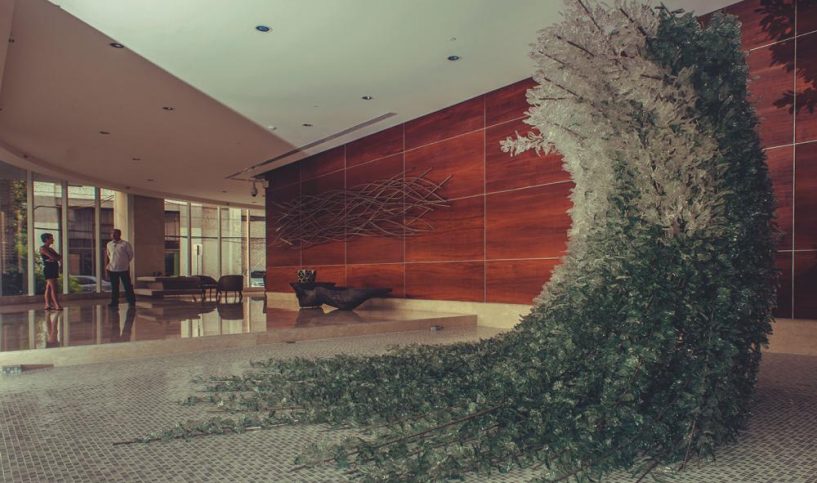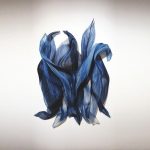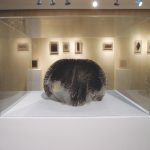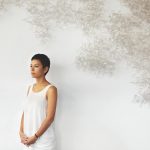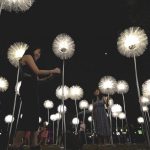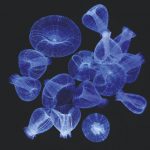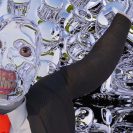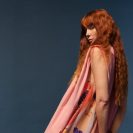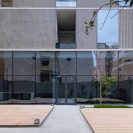What is art without a message? Artist Olivia D’ Aboville has been making waves in the art world. This wouldn’t surprise anyone familiar with her work. The ocean has been one of her key inspirations in creating visually arresting artwork that grapples with environmental issues.
In her own words, Olivia D’ Aboville, the young Manila based French-Filipino artist, is sensitive to light, fluidity and movement and finds the ocean an endless inspiration for her art.
Always conscious of the beauty of the environment, D’ Aboville strives to ensure that all her artwork has been constructed using recycled materials ranging from plastic spoons to plastic bags and water bottles. Creating powerful eco-ethical artwork from abandoned, discarded objects is key to her central creative process.
D’ Aboville has been exploring sculpting with textile techniques and her works range from textile jewelry, to sculptures, to lighting designs and installation art. The artist says she would love to help design an artificial coral reef in the Philippines.
D’ Aboville has exhibited widely in museums, galleries, hotels and festivals in Paris, Lyon, Hong Kong, Manila, New York and Singapore.
Q AND ART: OLIVIA D’ ABOVILLE
There is a sense of vulnerability and fragility in your installations. Your love for the ocean is at the heart of everything you do, whether it is your incredible installation titled Coral Garden or the Anemone Collection of lights. What fascinates you about the ocean?
I’m at awe in front of the ocean, I am both fascinated and terrified by it. I can find endless inspiration in the theme of the ocean, in its movement, in the incredible creatures that inhabit this underwater world.
What materials do you often use?
I started recycling and up-cycling mass-produced plastic objects such as plastic spoons, stirrers, plastic bags and other containers when I was a student in textile design in Paris. I would weave and interlace unconventional materials. I liked those materials for their transparency and malleability, but it became more of a statement when I realized I was drawn to ordinary objects that are discarded after a single use and that would eventually end up polluting the environment.
Why do you feel compelled to use recycled materials like glass and plastic in your work? Is there a message in your narratives that you want to convey?
70% of plastic waste ends up in the ocean. Recycling and up-cycling these materials was a way for me to go full circle. I wanted to use those objects and transform them into new works, inspired by the sea.
So what’s your process when starting a new project? Do you plan out the work beforehand, or just let it happen?
I usually start with the material itself. I play with it and it eventually dictates the final form. I don’t really plan much although I have an idea of its finality.
You have come a long way from your first solo exhibition of textile sculptures titled Chasm of Fantasies, held in Manila in 2010 to installation art, lighting designs to designing home accessories. How have you evolved as an artist over time?
At the start of my career as a young artist, I made it a point to try to build my “brand” in the sense that I wanted all my works to be coherent and consistent. The ocean has been one of the key elements in my work, I’ve then opened up to Nature as a more general theme of inspiration, not limiting myself to the water world. Nevertheless, my pieces would still have an organic feel to them. My works ranges from sculptures to light art installation, to textile design and jewelry design. The scales vary from one to another and I explore all sorts of materials. I think that’s how I kept the wheels turning, one idea or concept would help feed another.
Recently, you have also moved into jewelry designing. How did it come about? Can tell us about the Crystal Dew Jewelry Collection for Denovo Diamonds in the Philippines?
Denovo is a new Filipino diamond jewelry brand that launched in July 2014. To go out with some noise, they commissioned six artists to come up with their own line. It was a great experience to work on the project, seeing my drawings turned into 3D interpretations in clay for editing and then seeing and wearing the finished pieces. The team was great, it was very easy to work with them. My Crystal Dew collection was composed of a two finger ring, two bracelets, three necklaces and ear studs. For me, the diamond could only represent the world’s most precious element: water. I left the vast ocean realm to focus on the delicate size of a water droplet. I was inspired by the morning dew found on twigs and branches at dawn. The collection is quite simple yet elegant I think and organic-looking.
How do people react to your eco-ethical artwork? What sort of reactions do you hope to elicit and keeping that in mind what’s the most notable reaction you’ve had?
I like hearing surprise in people’s reaction when they realize what my works are made of. I had a large scale outdoor installation for the Christmas season where I displayed 90 larger than life light flowers. I recycled 9,000 plastic water bottles for the heads of the Dandelions and it always makes me smile when I hear people say “Oh they’re made of water bottles!” The reaction in Asia has been more entertaining I suppose, because the mindset here isn’t like in Europe yet, where being green is a part of everyone’s lifestyle. The green movement there, is much more embedded in the culture.
With your well-deserved success, what’s in the pipelines for you now? What directions do you see yourself going in the future?
I’m a very fortunate person and I’m very grateful that my work has had a positive impact on people. It definitely encourages me to continue experimenting and having fun in what I love doing. I’m happy more opportunities are coming my way and I hope to be involved in environmental projects in the near future. I’ve always dreamt of being part of a coral nursery program. Perhaps I can help design an artificial coral reef in the Philippines.
To find out more about Olivia D’ Aboville, you can visit www.oliviadaboville.com.
Images courtesy of the artist.



